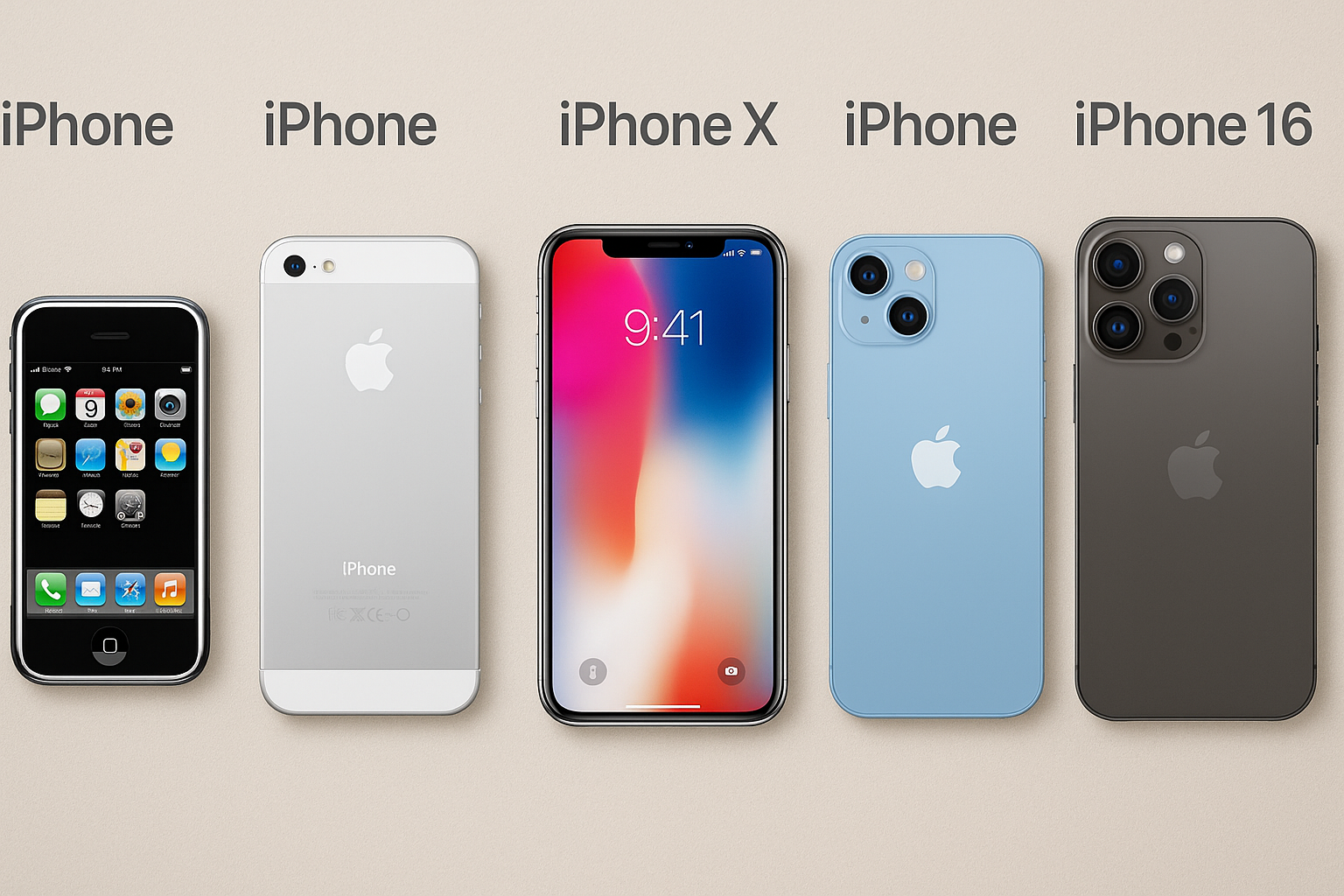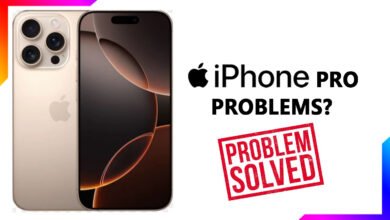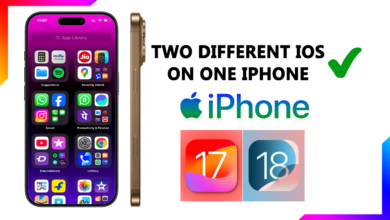The Evolution of iPhone: From 2007 to iPhone 16 (Biggest Changes)

From the original iPhone’s humble beginning in 2007 to the sleek, AI-powered iPhone 16, Apple’s flagship device has evolved dramatically — both in form and function. The biggest changes include camera systems that rival DSLRs, powerful processors, AI-enhanced features, and a full design shift that reflects a decade and a half of innovation.
Let’s take a look at how far we’ve come — and why each iPhone generation has pushed the boundaries of what a smartphone can be.
2007: The First iPhone – A Bold Beginning
Back in 2007, Apple shocked the tech world. No physical keyboard. No stylus. Just a 3.5-inch multi-touch screen. The original iPhone was more than a phone — it was the foundation of the modern smartphone. While it lacked an App Store, front camera, or video recording, it introduced the world to touch-based navigation in a clean, stylish shell.
Key Specs:
- 3.5-inch display
- 2MP rear camera
- No App Store (yet)
- Internet, phone, and iPod in one device
2008–2012: App Store, Retina Display & Facetime
The iPhone 3G introduced the App Store, unlocking endless possibilities. The iPhone 4 brought a crisp Retina display and FaceTime. Apple’s clean design and focus on smooth user experience began to define the brand. By 2012, the iPhone 5 made the screen taller and introduced the Lightning port.
Milestone Moments:
- App Store launches in 2008
- Retina Display on iPhone 4
- First front-facing camera
- Thinner and lighter iPhone 5 design
2013–2017: Touch ID, Bigger Screens & Goodbye Headphone Jack
Security took a leap with Touch ID on the iPhone 5s. Then came the iPhone 6 series with bigger screens — Apple finally joined the “phablet” trend. The iPhone 7 stirred controversy by removing the headphone jack. The real game-changer? iPhone X in 2017 — with Face ID and a full-screen OLED display.
Key Changes:
- Touch ID and 64-bit architecture
- Larger displays (4.7″ and 5.5″)
- Headphone jack removed (iPhone 7)
- iPhone X introduced Face ID and OLED
2018–2022: Photography Power & Performance Boosts
These years were all about pro-level cameras and performance. The iPhone 11 Pro brought triple-lens cameras and Night Mode. The iPhone 12 added 5G and MagSafe, while iPhone 13 Pro featured ProMotion (120Hz refresh rate). iPhone 14’s Crash Detection and Emergency SOS via satellite showed Apple leaning into safety features.
Standout Upgrades:
- Triple-camera systems
- ProMotion displays
- Cinematic video mode
- Satellite connectivity for emergencies
2023: iPhone 15 – A Shift in Design & Charging
The iPhone 15 lineup marked a new era. Apple replaced the Lightning port with USB-C, aligning with global standards. The Pro models also got a titanium frame, making them lighter but just as strong. Every model now included the Dynamic Island, blurring the line between hardware and software even further.
Notable Highlights:
- USB-C charging port
- Titanium build (Pro models)
- A17 Pro chip with console-level graphics
- Dynamic Island across all models
2024: iPhone 16 – Smarter, Faster, and More Intuitive
With the iPhone 16, Apple leaned harder into AI and smart software enhancements. Think better on-device voice commands, real-time transcription, smarter camera suggestions, and even more advanced computational photography. Battery life has improved, and the display is brighter and more efficient. The Pro models now boast even stronger thermal performance and ultra-thin bezels.
What’s New:
- AI-powered features for productivity and creativity
- Improved voice interaction and on-device intelligence
- Even more advanced camera tuning
- Slimmer bezels and better thermals
- Longer battery life
Final Take: 17 Years of Innovation
From a single-touch device in 2007 to a smart, AI-enhanced powerhouse in 2024, the iPhone has redefined how we live, work, and create. Every generation hasn’t just added features — it’s reimagined what a phone can do. And with the iPhone 16, it’s clearer than ever: Apple is shaping the future, one smart device at a time.





